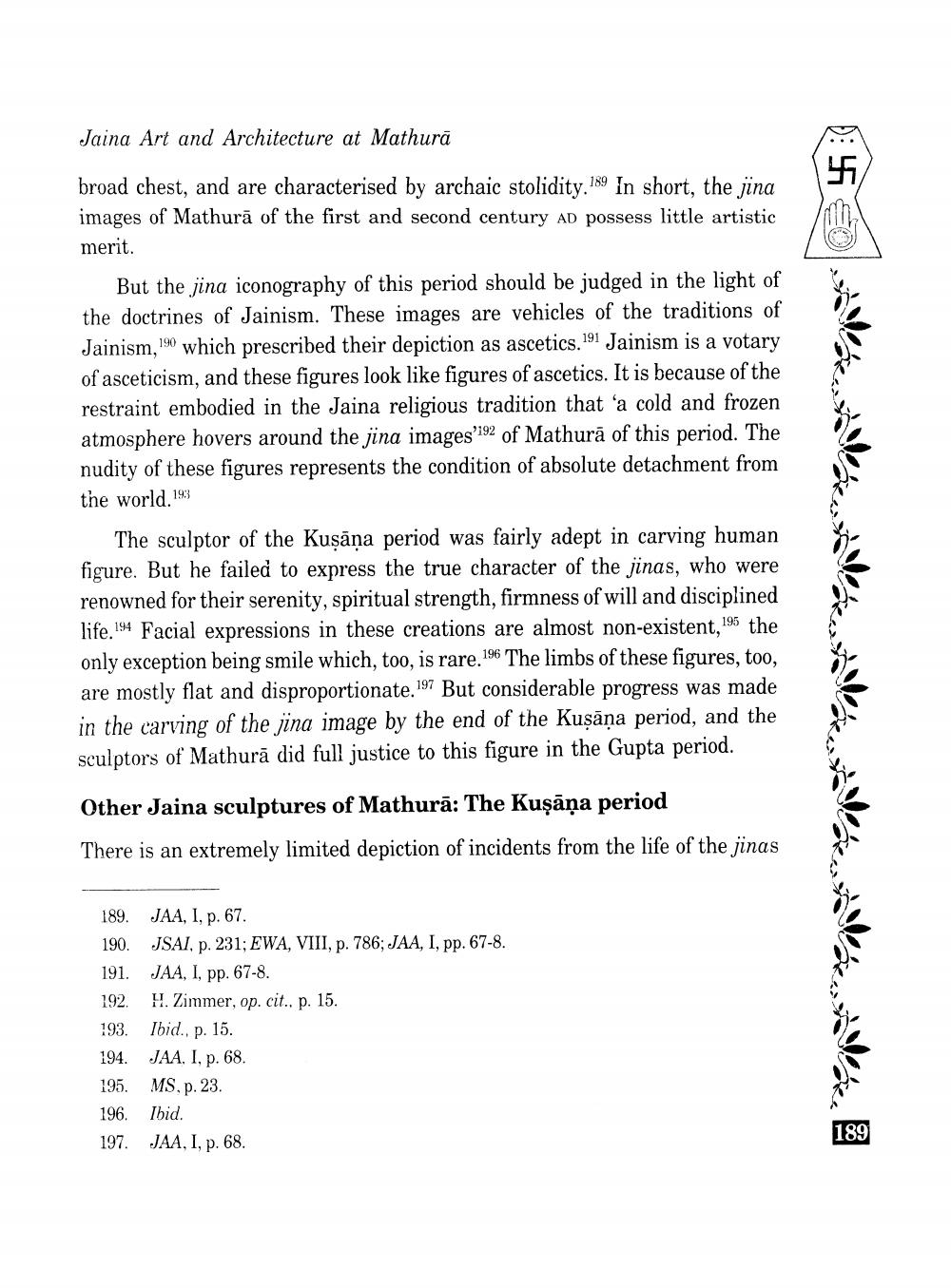________________
Jaina Art and Architecture at Mathura
broad chest, and are characterised by archaic stolidity. 189 In short, the jina images of Mathurā of the first and second century AD possess little artistic merit.
But the jina iconography of this period should be judged in the light of the doctrines of Jainism. These images are vehicles of the traditions of Jainism, 190 which prescribed their depiction as ascetics. 191 Jainism is a votary of asceticism, and these figures look like figures of ascetics. It is because of the restraint embodied in the Jaina religious tradition that ‘a cold and frozen atmosphere hovers around the jina images'192 of Mathurā of this period. The nudity of these figures represents the condition of absolute detachment from the world.193
The sculptor of the Kuşāņa period was fairly adept in carving human figure. But he failed to express the true character of the jinas, who were renowned for their serenity, spiritual strength, firmness of will and disciplined life.194 Facial expressions in these creations are almost non-existent, 195 the only exception being smile which, too, is rare.196 The limbs of these figures, too, are mostly flat and disproportionate. 197 But considerable progress was made in the carving of the jina image by the end of the Kuşāņa period, and the sculptors of Mathurā did full justice to this figure in the Gupta period.
Other Jaina sculptures of Mathurā: The Kuşāņa period
There is an extremely limited depiction of incidents from the life of the jinas
189. JAA, I, p. 67. 190. JSAI, p. 231; EWA, VIII, p. 786; JAA, I, pp. 67-8. 191. JAA, I, pp. 67-8. 192. H. Zimmer, op. cit., p. 15. 193. Ibid., p. 15. 194. JAA, I, p. 68. 195. MS.p. 23. 196. Ibid. 197. JAA, I, p. 68.
189




